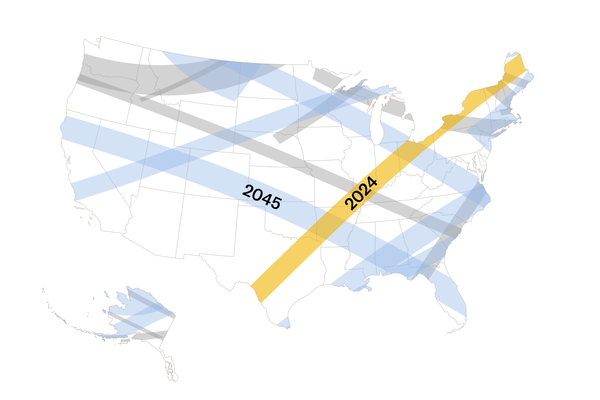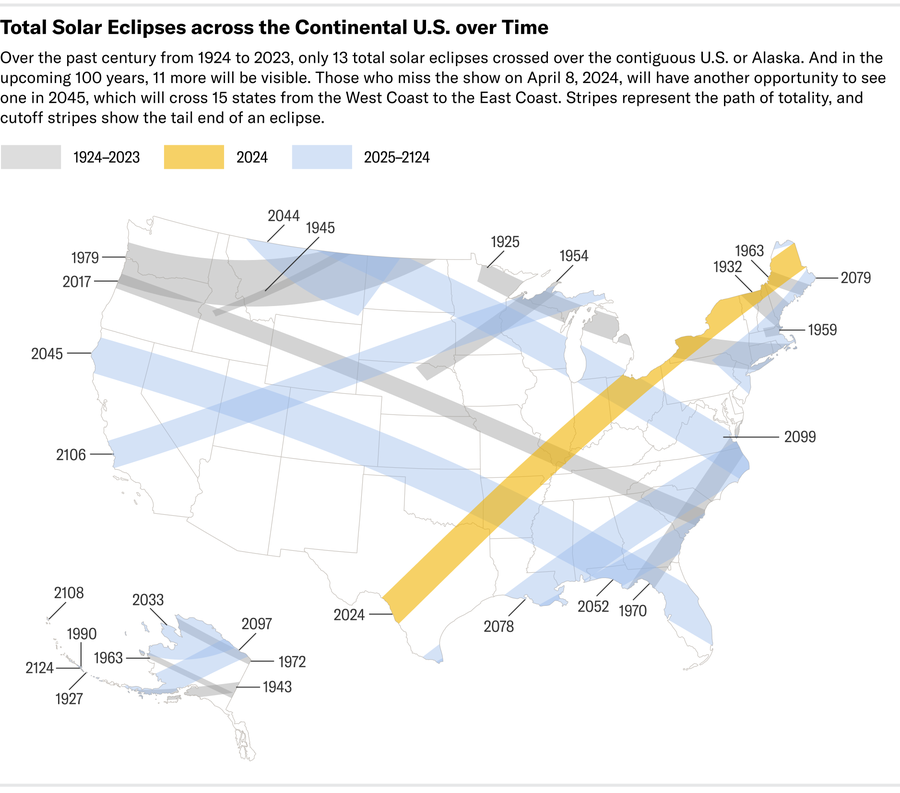Just how rare are total solar eclipses, which require a perfect alignment of the sun and moon?
Thank you for reading this post, don't forget to subscribe!By Shuyao Xiao

Shuyao Xiao; Source: NASA (data)
This article is part of a special report on the total solar eclipse that will be visible from parts of the U.S., Mexico and Canada on April 8, 2024.
On April 8 a total solar eclipse will cross 15 U.S. states from Texas to Maine. The display is unusual enough that hotels are booking up along the path and thousands of people plan to travel to see it.
But just how rare are solar eclipses?
On supporting science journalism
If you’re enjoying this article, consider supporting our award-winning journalism by subscribing. By purchasing a subscription you are helping to ensure the future of impactful stories about the discoveries and ideas shaping our world today.
In the 20th century 228 were recorded somewhere on Earth, of which 71 were total solar eclipses (if the sun and moon don’t perfectly align, you’ll see a partial eclipse). On average, a total solar eclipse is visible somewhere on the planet every 1.5 years. Many of these occur over ocean or remote, sparsely occupied places, however. In the U.S. the likelihood of seeing a solar eclipse, particularly a total solar eclipse, is much lower.
Over the past century from 1924 to 2023, only 13 total solar eclipses crossed over the contiguous U.S. or Alaska. And in the upcoming 100 years, just 11 more will be visible. So although they’re not unheard of, a total solar eclipse remains a once-in-a-decade or even once-in-a-lifetime spectacle for most Americans.

Credit: Shuyao Xiao; Source: NASA (data)
The next total solar eclipse in the continental U.S. will occur in 2033, but totality will be confined solely to parts of Alaska. For another event like the one in 2024, where millions can witness the sight, we’ll have to wait until 2045.
That’s when a total solar eclipse will span the U.S. from coast to coast again. The moon’s umbral shadow will first touch down in California and then sweep across a wide expanse of territory including Nevada, Utah, Colorado, Oklahoma, Arkansas, Mississippi and Alabama before finally exiting off the Florida coast.
Since 1924 some states have been lucky enough to witness multiple total eclipses whereas others have experienced relatively few or none. Alaska has been the luckiest; five eclipses have crossed its borders during this time, and four more will occur before 2125. There have been four in Massachusetts, and another one will occur in 2079. Montana has seen three, and there will be two more later this century. Delaware, Arizona and the District of Columbia have not experienced totality even once during this time frame.

Credit: Shuyao Xiao; Source: NASA (data)
Watching the solar atmosphere glow right from your doorstep is undeniably special. If an eclipse won’t come to you, however, these celestial wonders are definitely worth traveling for.

